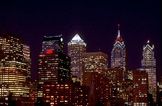The forest stretched no living man knew how far
New Urbanism. What is it? Why should we care? Well, think about your ideal home. What do most people say? To get this, I will look at a poll done in 2000. Of course, attitudes could have drastically changed in the last 5 years. But away we go:
- 54 percent of those responding think traffic has gotten worse where they live in the last three years;
- 76 percent think their state needs to do more to manage growth
- 56 percent strongly favor measures that would set aside green space, farming and forests outside of cities that are off limits to developers; and
- 78 percent think existing communities should be revitalized or be given priority funding rather than encouraging new housing in the countryside.
So, what does this say? People want less traffic, less growth, more green space, and revitalization in their own exisiting communities. Certainly, there is something to be said for people saying one thing, and doing another. How do we put this poll in context with what we know to be true, that people are moving in droves farther and farther into the exurbs and away from the cores in the United States? By showing how the government itself is subsidizing this movement.
First, the FHA and VA Loans has subsidized housing for Veterans of various wars. Surely, this isn't a bad thing, but where these people have searched for homes has been increasingly farther and farther away from the core. The 'suburban myth', created long ago in our nation, has created generations of people who believe that the suburbs are the epitome of life, liberty and the pursuit of happiness, and people have been innudated with this myth through TV show after TV show. Only recently have either programs truly acknowledged the core as a viable option for people to buy into, and yet properties are still overwhelmingly in the suburbs.
Secondly, the Federal Highway Acts, which started in the 1950s, increased construction tremendously on the highway system created for World War II. $25 billion was authorized for fiscal years 1957 through 1969 for the project(extrapolated out to 2005 dollars this would be over 172 billion dollars..pickpocket politics :D ). As a result, there was increased access to previously unavailable areas. Developers bought up the parcels along the highways by the thousands(and in big chunks), and built subdivisions all over the place. Eventually, as the people went, so went office space, and by the 1970s, office space was following the mass exodus to the suburbs. This created more and more traffic, and the solution was to throw more and more money at the building expansion of highways. What a solution!
Finally, there is a mortage deduction for people to help them buy a bigger house than what they truly can afford. Once again, the exodus to 'bigger' and 'better' is still being subsidized to this day. However, no on calls it subsidization. Highway funding is known as 'roads improvements', while transit funding is 'rail subsidies' or 'bus subsidies'. Interesting the wordplay which is involved for the exact same thing(and 'road improvements' are funded FAR more than other transit options on a federal, state and local level). Let's not even get into the tax rates as a subsidization for residents and businesses to move out. People complain of the high taxes in cities, and yet the major reason the taxes stay so low in farther out areas is the lack of infrastructure needs that they had for years and years, and then the lack of infrastructure development once people do move in. They ignore sidewalks, lighting, quality sewer systems, mass transit, and any other amenity which would be too 'city-like'. In order to not raise taxes on the local level, the state and eventually the federal level pays for the improvements through several programs(such as the ones above, plus others). What a racket.
Instead, a better solution would be to stop this subsidization by reclaiming the neighborhood. Smart growth's goals are a walkable environment, small lots, easy access to mass transportation, and overall a pedestrian friendly environment. These goals are achievable through fixing the zoning code of suburban and urban municipalities to bring back the idea of the town center and the pedestrian street. Reinstating the street grid in many areas is also vital, because it gives people many more options to get from one place to another, thus alleviating many traffic backups and problems. Creating too many one-way streets in cities has helped nullify a lot of the advantages of a street grid. This must be fixed. Also, another advantage of a gridded street pattern is that the streets can be made smaller. Streets that are smaller demand that drivers go slower, that pedestrians are catered to, and allows for on-street parking to further slow down moving cars. Safety for pedestrians is an essential element to the New Urbanist ideal.
This ‘New Urbanism’ is almost a rehashing of the way the
Downtowns are thriving all over the



0 Comments:
Post a Comment
<< Home